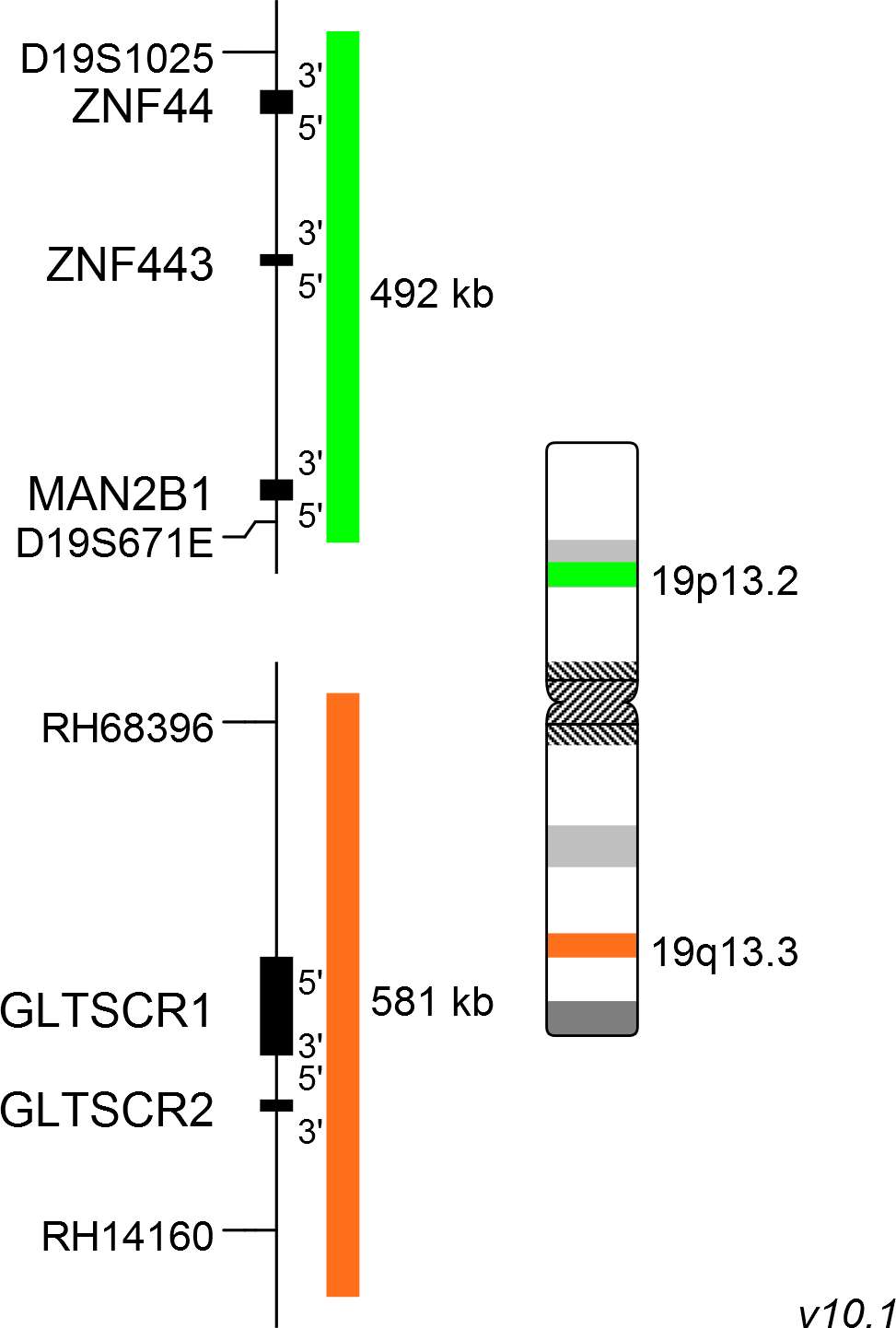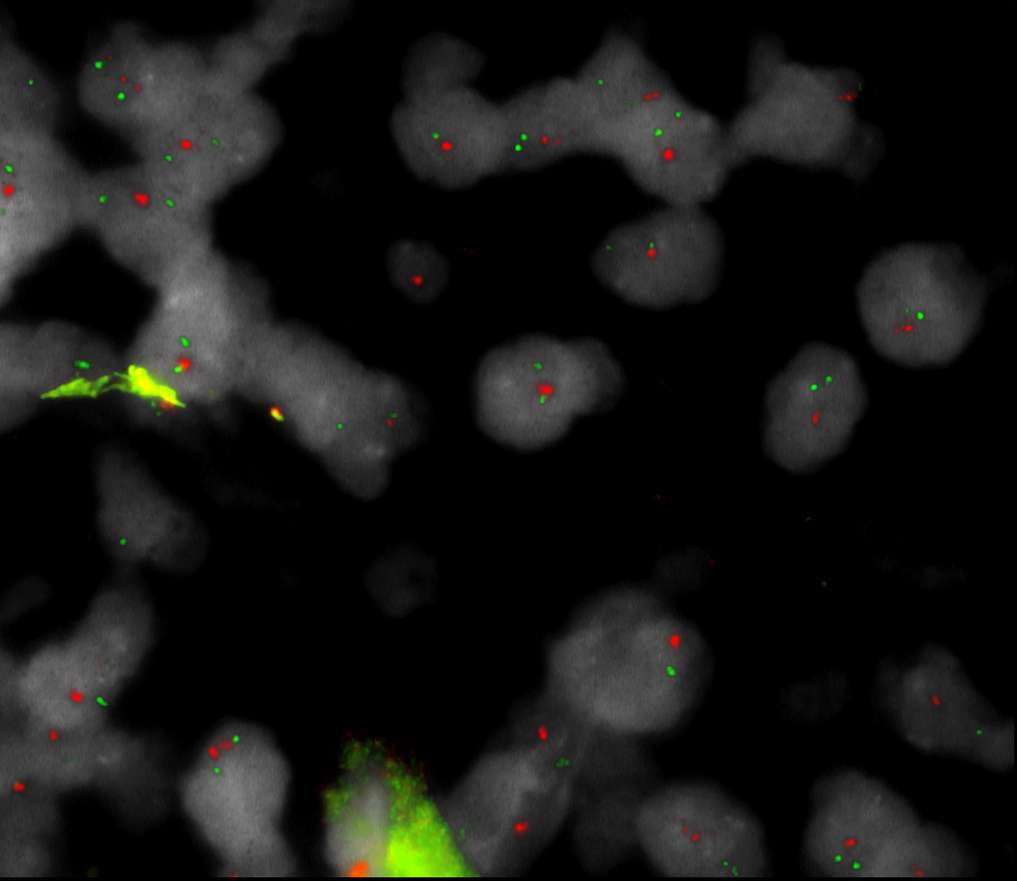
XL 19p/19q del
Deletion/Enumeration Probe
- Order Number
- D-6019-100-OG
- Package Size
- 100 µl (10 Tests)
- Chromosome
- 1919
- Regulatory Status
- IVDD
IVDR Certification
This probe is IVDR-certified in compliance with the Regulation (EU) 2017/746 on in vitro diagnostic medical devices (IVDR).
MetaSystems Probes has already certified a wide range of FISH probes, according to IVDR.
This product remains IVDD-certified until further notice.

XL 19p/19q del consists of a green-labeled probe hybridizing to the ZNF443 gene region at 19p13.2 and an orange-labeled probe hybridizing to the GLTSCR1/ GLTSCR2 gene region at 19q13.3.
Probe maps for selected products have been updated. These updates ensure a consistent presentation of all gaps larger than 10 kb including adjustments to markers, genes, and related elements. This update does not affect the device characteristics or product composition. Please refer to the list to find out which products now include updated probe maps.
Probe map details are based on UCSC Genome Browser GRCh37/hg19, with map components not to scale.
The 2016 ´World Health Organization Classification of Tumors of the Central Nervous System´(WHO 2016) combines, for the first time, histological features and molecular signatures for the definition of many tumor entities. Gliomas are a category of tumors of the brain and spinal cord originating in glia cells. Oligodendrogliomas are a subtype of gliomas accounting for up to 18% of all cases. According to the WHO 2016, the classification of an oligodendroglioma requires information about the isocitrate dehydrogenase mutation status and 1p/19q loss of heterozygosity (LOH). LOH of 19q can be detected in about 80% of oligodendroglial tumors and to a lower extend in mixed gliomas. Co-deletion of 1p/19q is a well-accepted prognostic biomarker in neuro-oncology. Patients suffering from anaplastic oligodendroglioma harboring 1p/19q deletion generally have a good prognosis. Co-deletion of 1p/19q also has a predictive character, the molecular status of 1p/19q is relevant for therapy decisions.
Clinical Applications
- Solid Tumors (Solid Tumors)

Normal Cell:
Two green (2G) and two orange (2O) signals.

Aberrant Cell (typical results):
Two green (2G) and one orange (1O) signal resulting from loss of one orange signal.
- Reifenberger et al (1994) Am J Pathol 145:1175-1190
- Louis et al (2016) Acta Neuropathol 131:803-820
- Staedtke et al (2016) Trends Cancer 2:338-349
Certificate of Analysis (CoA)
or go to CoA Database




